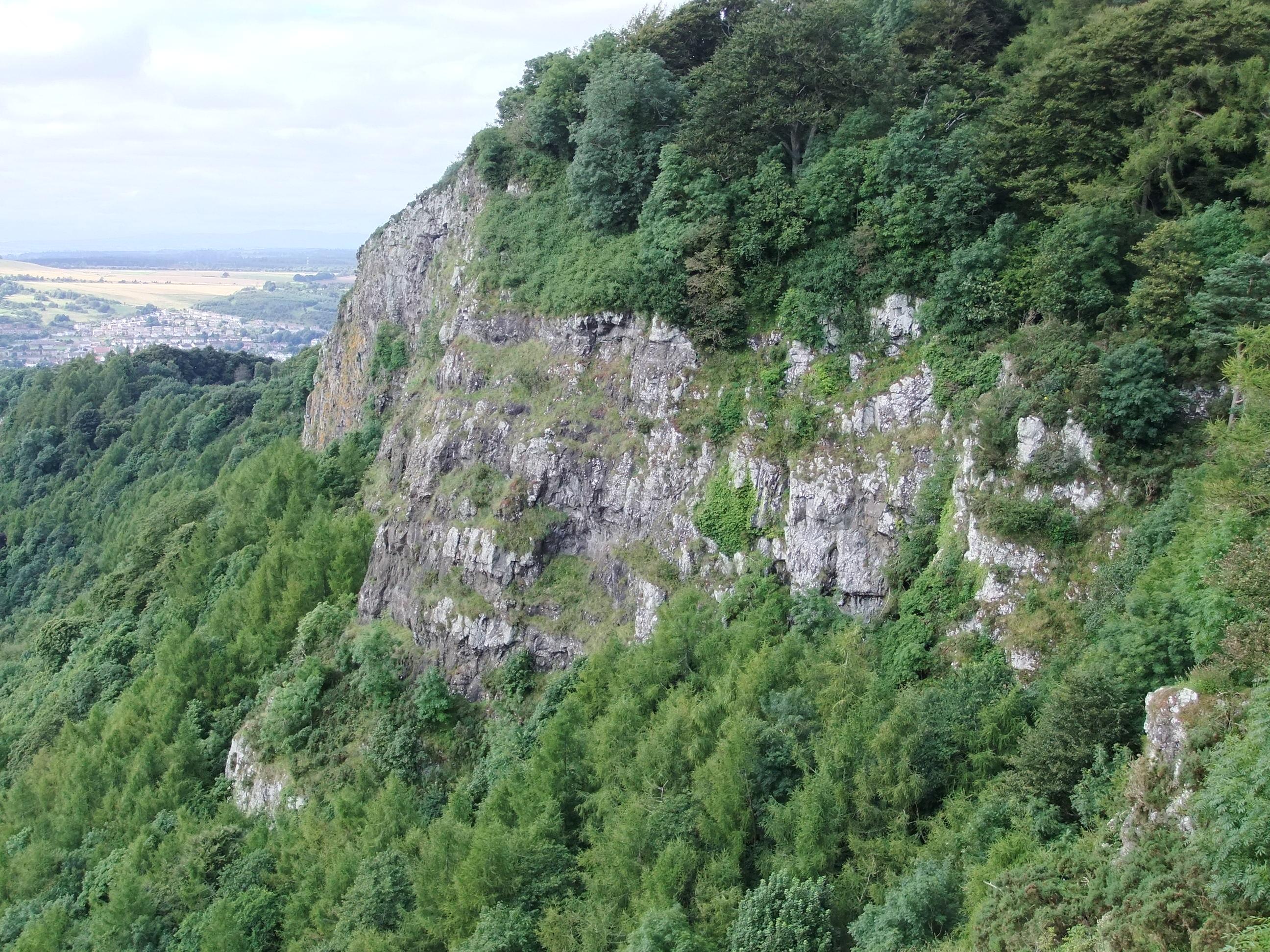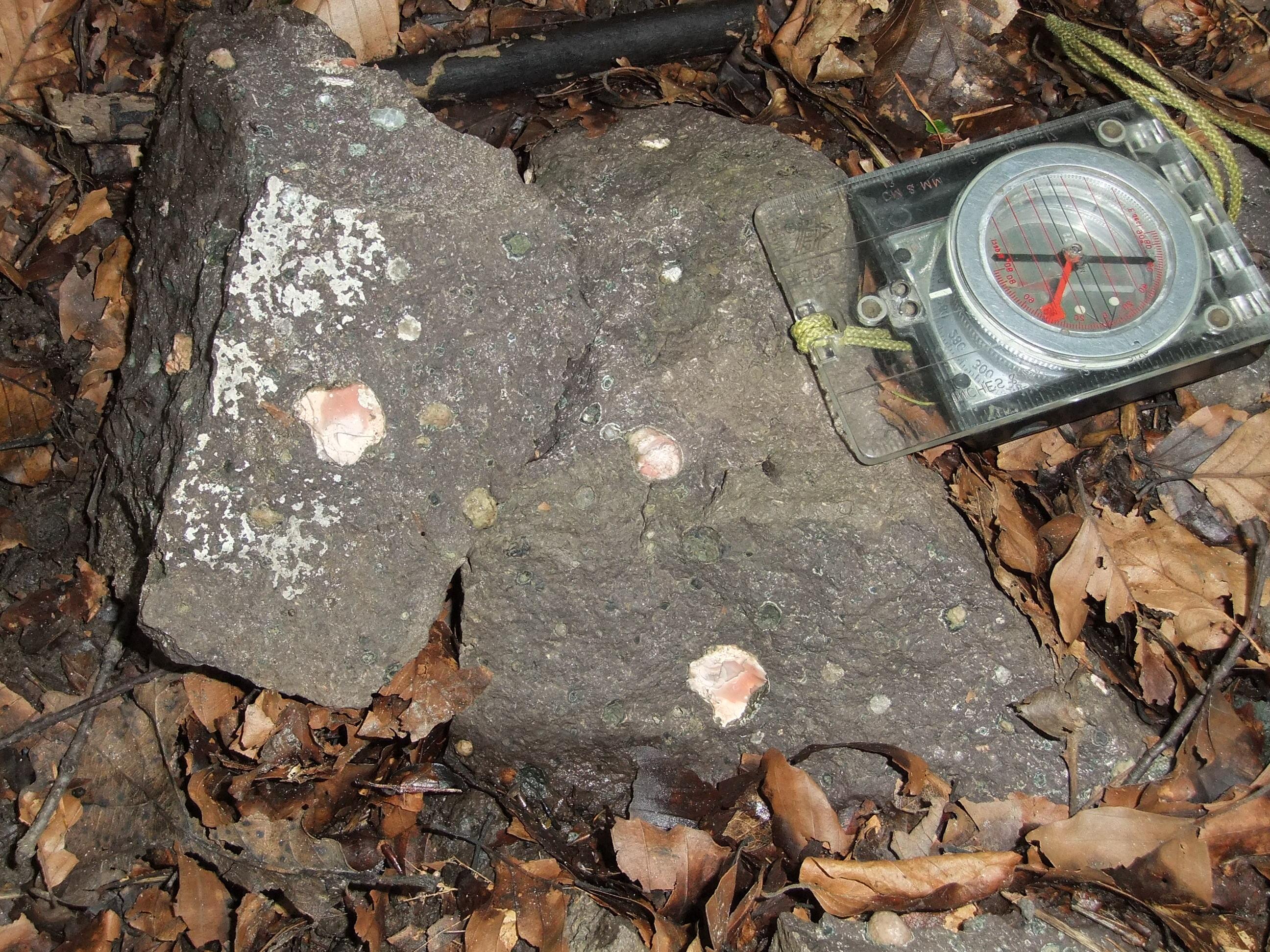Kinnoull Hill
Local Geodiversity site | Perth and Kinross
Local Geodiversity site | Perth and Kinross
Scotland's geosites are chosen because of their local, national or international importance. Take only photos, leave only footprints: avoid causing any damage to this site. You can walk almost anywhere in Scotland without the need to ask permission or keep to paths, but you have a responsibility to care for your own safety, to respect people's privacy and peace of mind and to cause no damage.
The right of access does not extend to quarries, building sites or any land where public access is prohibited, or to the collection of geological samples.
Spectacular cliffs of andesite lava overlying conglomerate; dolerite dyke; views over the Tay valley. Historical interest in the agates present in the lavas.
Kinnoull Hill is mainly composed of resistant andesite lavas of the Ochil Volcanic Formation, underlain by conglomerates. The lowest members are aphyric lavas with minor feldspar-phyric flows; above are feldspar-phyric basic pyroxene-andesites which form the steep cliffs on the south side of the hill. The uppermost, aphyric, flows occur on the northern slopes.
From the cliff edge just to the south of the summit there is an excellent view south over the Tay Valley with the Main Post-glacial Shoreline, to Moncreiffe Hill, the Braes of Abernethy and the Lomond Hills. From Kinnoull Tower (NO 13912273) westwards a thick series of stacked lava flows forms sheer cliff faces on the south side of the hill. The top of each flow is brecciated and these layers, some 20-30cm thick, tend to weather out accentuating the flow boundaries. There is a good example at the foot of the tower, and a small quarry at NO 13872278 has a 3m thick flow with a crumbly brecciated top.
At the base of the cliffs, volcanic conglomerate is seen in crags from NO 13562248 to NO 13622248, dipping north at 10o. Rockfall debris at the edge of the lane and on the lower hillslopes consists of vesicular and amygdaloidal aphyric lava. Small nodules of agate occur in fallen blocks below Kinnoull Tower (about NO 13962257).
Vehicle parking at Corsiehill Quarry (NO135235) allows examination of the quarry and access to the core path network on the hill. To access the path along the foot of the slope, leave the main A85 road just before the M90/A90 interchange at West Lodge, turn right along a lane and park at NO13152222 beside the Gloag Foundation office; from here a track leads ENE.
https://www.lyellcollection.org/doi/abs/10.1144/transgsla.4…
"Observations on the Hill of Kinnoul, in Perthshire" John MacCulloch, 1814
There are no safety notes yet.
There are no site highlights yet.

View west from Kinnoull Hill Tower, showing stacked lava flows in the cliffs.
Carol Pudsey
Aug. 25, 2012

Top of an andesite lava flow (upper 20cm is brecciated), cliffs below Kinnoull Tower outer wall.
Carol Pudsey
Aug. 25, 2012

Conglomerate in low cliffs above the lane at the base of the hill. Bedding dips about 10° left.
Carol Pudsey
Aug. 25, 2012

Fallen blocks of andesite lava with small agates.
Carol Pudsey
Aug. 25, 2012

One particularly interesting andesite boulder near a junction of tracks contains an angular clast some 40cm long of pale greenish grey slate. This finely-laminated lithology bears no resemblance to any local Lower Devonian sedimentary rock and looks more like parts of the Birnam Slate Formation of the Dalradian. MacCulloch found a similar clast, beautifully illustrated in his paper of 1814, but offered no interpretation.
Carol Pudsey
May 5, 2020